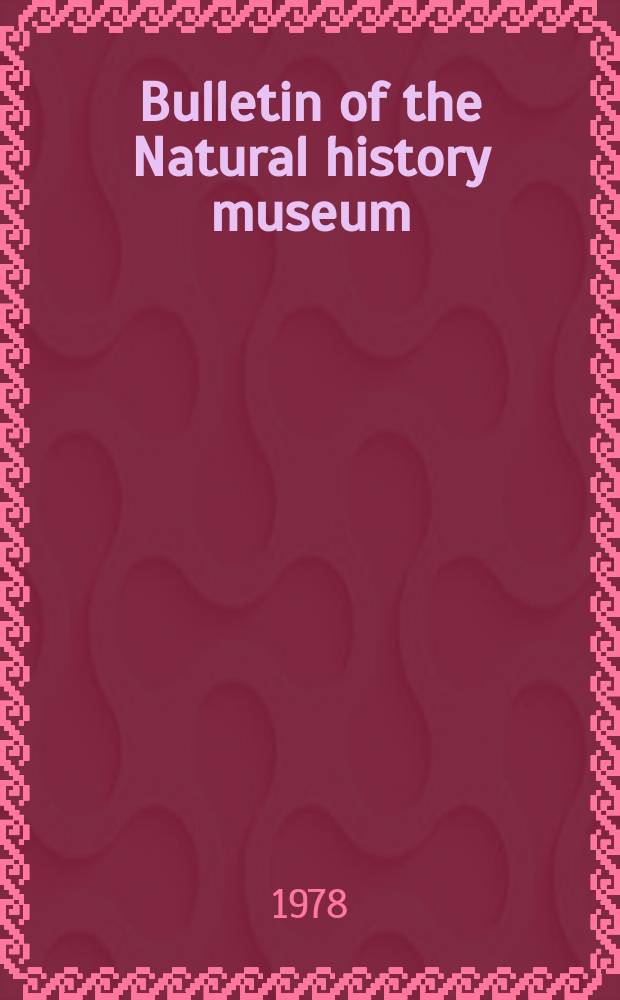Nature's Fury: The Risk Beneath Bangladesh
Follow geologists as they map a significant fault near the capital of Bangladesh and study how an earthquake on that fault could cause a river to shift ...
American Museum of Natural History
Science Bulletins: The Final Voyage of Enterprise
Shuttle Orbiter Enterprise was the first of NASA's space shuttles. Its original name, "Constitution", commemorated the United States Bicentennial in 1976, but a ...
American Museum of Natural History
Science Bulletins: Learning from Lyme
Since its discovery in 1975, Lyme disease has become one of the most commonly reported diseases transmitted by insects, spiders or other arthropods.
American Museum of Natural History
Science Bulletins: GRAIL Spacecraft Ready to Map the Moon
NASA's Gravity Recovery and Interior Laboratory (GRAIL) mission has put a pair of nearly identical spacecraft in orbit around the Moon. By using radio waves to ...
American Museum of Natural History
Science Bulletins: Fire Ants Raise Brazilian Butterflies
When researchers in Brazil studied the early larval stages of the butterfly Aricoris propitia, they discovered that the larvae had solicitous caretakers—fire ants.
American Museum of Natural History
Science Bulletins: In Search of Wild Variety
To help build the catalog of life, biologists at AMNH search the globe for species that have never been scientifically described. Discover seven of these new ...
American Museum of Natural History
Science Bulletins: Brown Widow Spiders Invade Southern California
In the last decade, brown widow spiders have made a home for themselves in parts of Southern California, a region once dominated by the more venomous ...
American Museum of Natural History
Science Bulletins: The Transit of Venus
For a handful of hours in June 2012, Venus's orbit carried it directly across the face of the Sun, providing a spectacular backlit view visible from Earth. Only six ...
American Museum of Natural History
Science Bulletins: New Blood Gives New Life to Florida Panthers
Endangered Florida panthers benefited from the introduction of Texan pumas in their ranks.
American Museum of Natural History
Science Bulletins: The Oil Spill's Other Victims
http://amnh.org/rc10 Beyond oil-coated pelicans, the Gulf spill imperils many lesser-known species such as marsh grasses, seaweed, and deep-sea ...
American Museum of Natural History
Сколько массовых вымираний было на самом деле?
Спонсор перевода: Lingua Airlines (уроки английского по скайпу): ...
AlexTranslations
Prehistoric Horrors Aka Dinosaur Models For Film (1967) | British Pathé
Watch as Arthur Hayward, a model maker at London's Natural History Museum, constructs model versions of dinosaurs for stop motion use in films such as 'One ...
British Pathé
Science Bulletins: The Rise of Oxygen
Follow geologists as they hunt for, pickaxe, and test rock samples from the 2.5 billion year old Huronian Supergroup, a sedimentary formation in Ontario, Canada ...
American Museum of Natural History
Science Bulletins: SpaceX Dragon Succeeds in Historic Mission
SpaceX achieved a milestone in space travel last month, becoming the first private company in the United States to successfully launch a cargo capsule, attach it ...
American Museum of Natural History
Science Bulletins: Mapping Emotions in the Body
Feelings are often associated with physical reactions: terror can send chills down your spine, and love can leave you weak in the knees. A recent study has ...
American Museum of Natural History
Science Bulletins: Zircons—Time Capsules from the Early Earth
Zircons are tiny crystals with a big story to tell. Some of these minerals are the oldest Earth materials ever discovered, and therefore yield clues about what the ...
American Museum of Natural History
Science Bulletins: Invasive Species
It's war in many ecosystems around the world as invasive and native species battle for primacy. Facing the increased exchange of ship ballast water among ...
American Museum of Natural History
TSC#08 - Mosasaures, de Jurassic World à la Science (F-L Reptile)
Merci de voter ici : https://strawpoll.com/8a8fpx63 Note : mes excuses pour la qualité du son de notre invité et pour la fin brusque du live (problème de ...
Robin Isnard
The History of Climate Cycles (and the Woolly Rhino) Explained
Learn more about Hack the Moon at https://wehackthemoon.com Check out Reactions's Summer of Space video on the Northern Lights!
PBS Eons
The Known Universe by AMNH
StayHome #withme this Friday as we tour the universe – live! https://youtu.be/jiYNviti5gM The Known Universe takes viewers from the Himalayas through our ...
American Museum of Natural History
Science Bulletins: Brain Evolution—The Sweet Smell of Success
A good sense of smell may have contributed to the development of certain kinds of social functions in Homo sapiens, according to a new study. Scientists used ...
American Museum of Natural History
How Many Mass Extinctions Have There Been?
Thanks to Audible for supporting this video. Get your free 30-day trial at https://www.audible.com/minuteearth Thanks also to our Patreon patrons: Today I Found ...
MinuteEarth
Science Bulletins: Jellies Down Deep
This Bio Bulletin, which features spectacular underwater footage, follows scientists at the Monterey Bay Aquarium Research Institute as they retrieve jellies from ...
American Museum of Natural History
Science Bulletins: Making Medicine from Nature
Three cutting-edge medical technologies inspired by biodiversity. This Bio Bulletin snapshot is third in a series to celebrate the 2010 International Year of ...
American Museum of Natural History
Science Bulletins: Bee Deaths Linked to Common Pesticides
Several recent studies have questioned whether exposure to common pesticides might be impairing bee performance and contributing to the observed ...
American Museum of Natural History
Nature's Fury: Yellowstone - Monitoring the Fire Below
The magma chamber responsible for Yellowstone's past volcanic activity still lies beneath, and continues to steam, heat, and shift the park landscape.
American Museum of Natural History
Coelacanth Fish Fossil († Coelacanthus sharjah Khalaf, 2013) at Sharjah Natural History Museum, UAE
The Sharjah or Arabian Coelacanth Fish Fossil († Coelacanthus sharjah Khalaf, 2013) at Sharjah Natural History and Botanical Museum, Sharjah, Emirate of ...
Prof. Dr. Sc. Norman Ali Bassam Ali Taher Khalaf
LCDV 12 - Les statuts des fossiles en muséographie
Bonjour à toutes et à tous ! On se retrouve aujourd'hui pour une vidéo à deux directions : paléontologique et muséographique. Il s'agit de voir un peu les ...
Valéoraptor
Science Bulletins: Language in the Brain
Why is it that humans can speak but chimpanzees, our closest living relatives, cannot? The human brain is uniquely wired to produce language. Untangling this ...
American Museum of Natural History
Science Bulletins: Deadly Larvae Lure Predators
Amphibians that try to feed on the larvae of the Epomis beetle will find that they've bitten off more than they can chew. Rather than avoiding its predators, the ...
American Museum of Natural History
Science Bulletins: Potato Biodiversity—Ensuring the Future
Farmers in the Andes use biodiversity as insurance. The potato, a plant native to the area that is now the world's fourth most important staple crop, is still locally ...
American Museum of Natural History
The Scientific Accuracy of Walking With Dinosaurs - Episode 2: Time of the Titans
20 years after it first aired, how accurate are the prehistoric creatures in the second episode of Walking With Dinosaurs? From Diplodocus to Allosaurus and ...
Ben G Thomas
Nature's Fury: Tsunami Science - Reducing the Risk
The scientific data left in the wake of the horrific December 26, 2004 tsunami is proving invaluable to better prepare for future events. Learn more at Nature's ...
American Museum of Natural History
Crocodile tracks - Virtual Museum
more info at http://pfalkingham.wordpress.com Presented here are digital models of [the casts of] tracks from 12 species of extant crocodile. The physical data ...
Peter Falkingham
Science Bulletins: Lemurs of Madagascar—Surviving on an Island of Change
On the world's fourth largest island, and virtually nowhere else, lives an entire "infraorder" of primates: the three dozen or so lemur species. But Madagascar has ...
American Museum of Natural History
Science Bulletins: CT Scans Help Poached Rhinos
South Africa is home to more than 80 percent of Africa's remaining rhinoceroses, most of which live in national parks and reserves. But even in these protected ...
American Museum of Natural History
Fossil Shows Ostrich Relatives Lived in North America 50 Million Years Ago
Exceedingly well-preserved bird fossil specimens dating back 50 million years represent a species of a previously unknown relative of the modern-day ostrich, ...
The University of Texas at Austin
Science Bulletins: Acid Oceans
If youre an ocean creature with a hard shell—like a sea urchin, a hermit crab, or a coral polyp—you prefer ocean water with a pH of about 8.2. This chemistry ...
American Museum of Natural History
When Carnivores Took to the Water
AMNH scientist Camille Grohé studies the evolutionary history of aquatic carnivores, including otters, seals and sea lions. How and when did their land-dwelling ...
American Museum of Natural History
Nature's Fury: Quakes from Space
In recent years, scientists have begun using satellite technology to study earthquakes from space. By monitoring the tiniest movements of the Earth's crust, they ...
American Museum of Natural History
Nature's Fury: On Shaky Ground - Learning from the Haitian Earthquake
Ten months after a magnitude 7.0 earthquake flattened huge sections of Port-au-Prince, Haiti, a team of geologists commissioned by the United Nations set out ...
American Museum of Natural History
Science Bulletins: Curiosity Rover Heads for Mars
The biggest and most technically advanced rover to date is on its way to Mars. In the latest Astro Bulletin from the Museum's Science Bulletins program, follow ...
American Museum of Natural History


























































